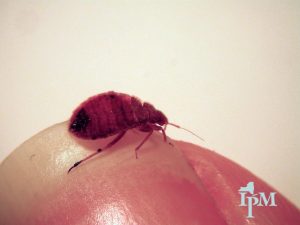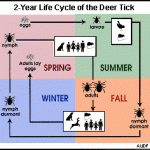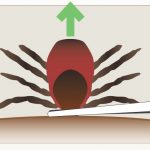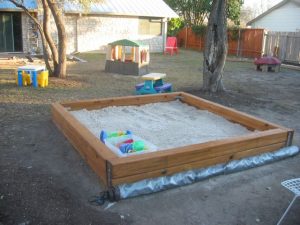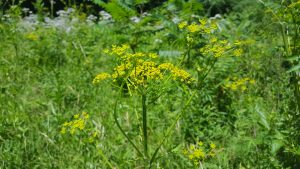“A word is worth a thousand pictures, if it is the right word. Risk is the right word.” – Michael Hoff, PhD
When a problem presents itself, the first step should often be to determine whether it really is a problem. In other words, does it create a risk? At times, something may look scary, but may actually be eating other insects that are pests (house centipedes are a great example of this). Slime mold, a fungus-like organism, showing up in a school playground recently brought up the question of risk and how to react to it.
From the Plant Disease Diagnostic Clinic fact sheet: “Slime molds are frequently observed when they form large colonies on mulch around trees or shrubs. They may initially appear as a slimy mound or mass, come in a variety of colors, and are often unsightly.”
Unsightly indeed. It is often called dog vomit mold.
So a school was very concerned when it started popping up throughout the playground mulch. They began making phone calls which led to us. We were able to reassure them that slime mold feeds only on bacteria in the mulch and there are no known health risks associated with them.
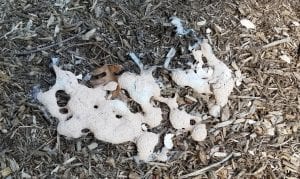
Slime mold crusts over after it finishes with its mobile stage. Still unattractive.
Human health risk usually reaches the highest tier of concern for risk assessment. Given the low risk, the school could just wait it out until the weather changes. Slime mold thrives under hot and humid conditions. Cool, dry weather would take care of the issue. It’s a good reminder that many pests (or, in this case, non-pests) are weather related and checking the forecast can help us determine how long the issue might last.
A change in the weather is sufficient to recreate the world and ourselves. – Marcel Proust
It’s worth noting that there are no pesticides registered in New York to manage slime mold on mulch. Any use of a pesticide would not only be illegal, but would also cause its own unnecessary risk.
There is another concern that falls lower down on the list, but is still important – perception of risk. In this case, there was a concern about how parents of young children would react to the unsightly mounds. To address this concern, we recommended shoveling out the visible slime mold and hosing down the area to disperse residual materials. And reminded them that as long as the weather remained hot and humid, slime mold would continue to pop up, so keep the shovel at hand.
A unrealistic perception of risk can also be addressed through education. So we found this nifty video about these fascinating organisms and how they move. Check out this Deep Look video from PBS. Talk about a teachable moment!
Have a question on managing pests in your school or childcare facility? Visit our Schools and Daycare Centers webpage.


